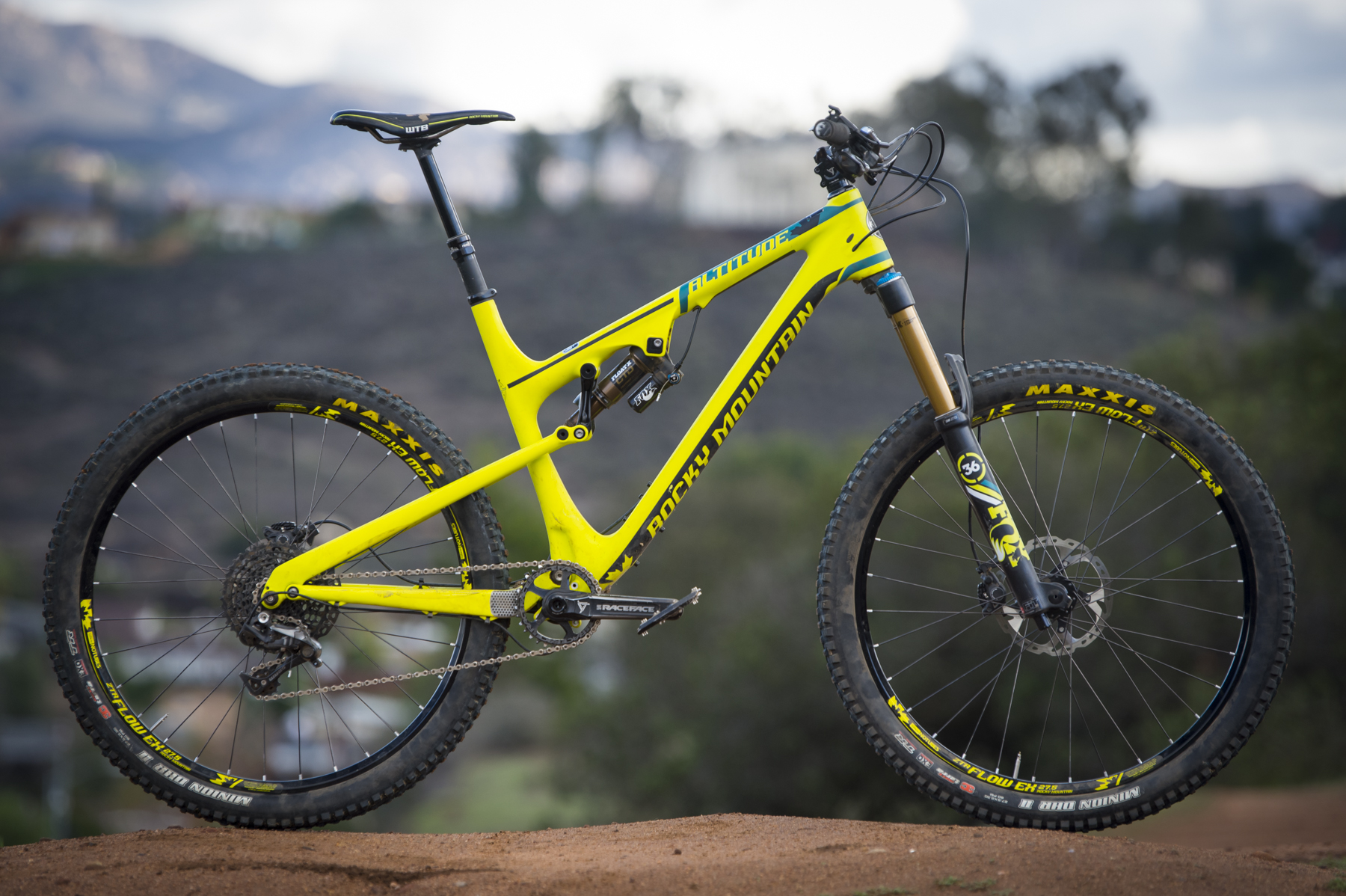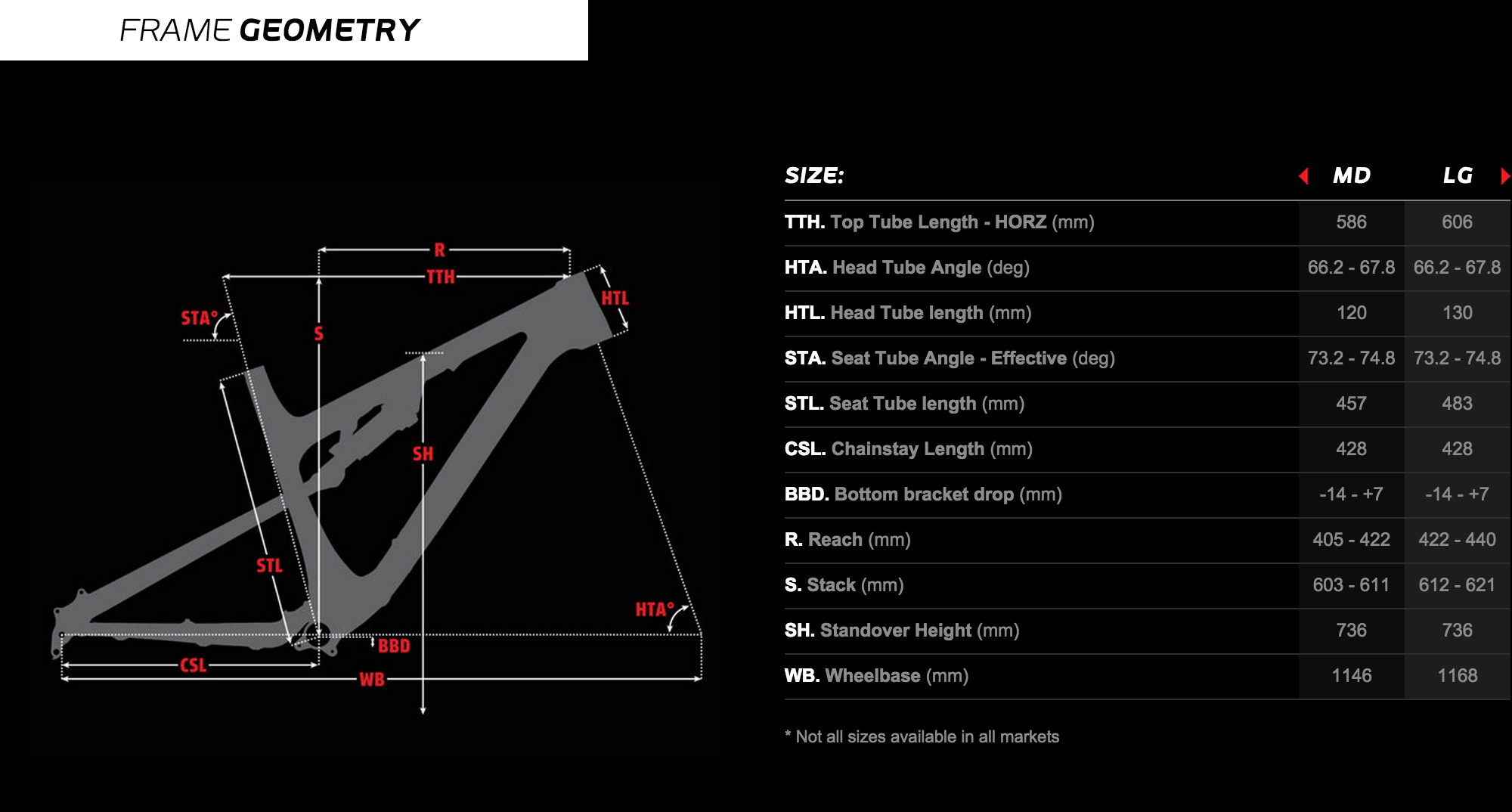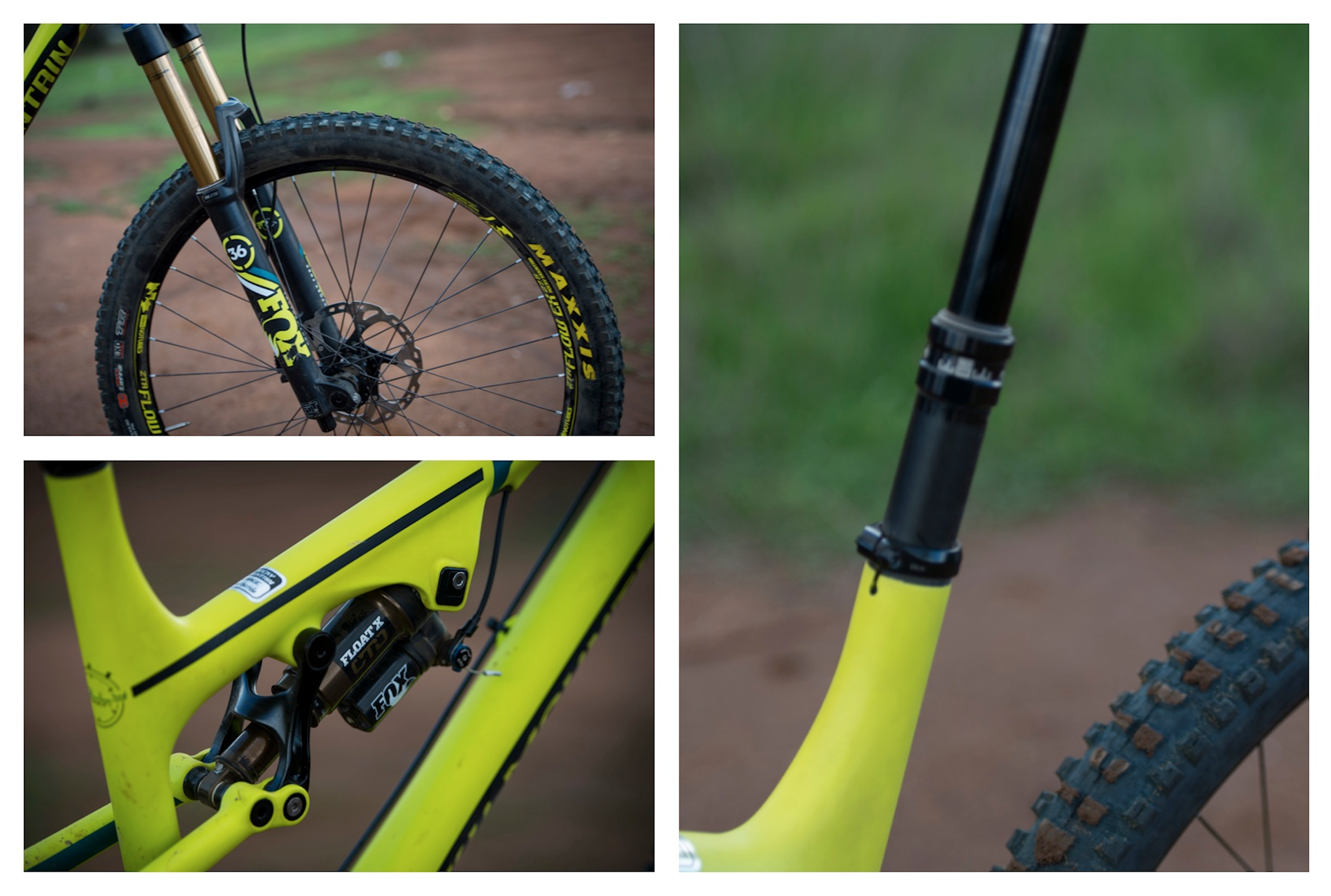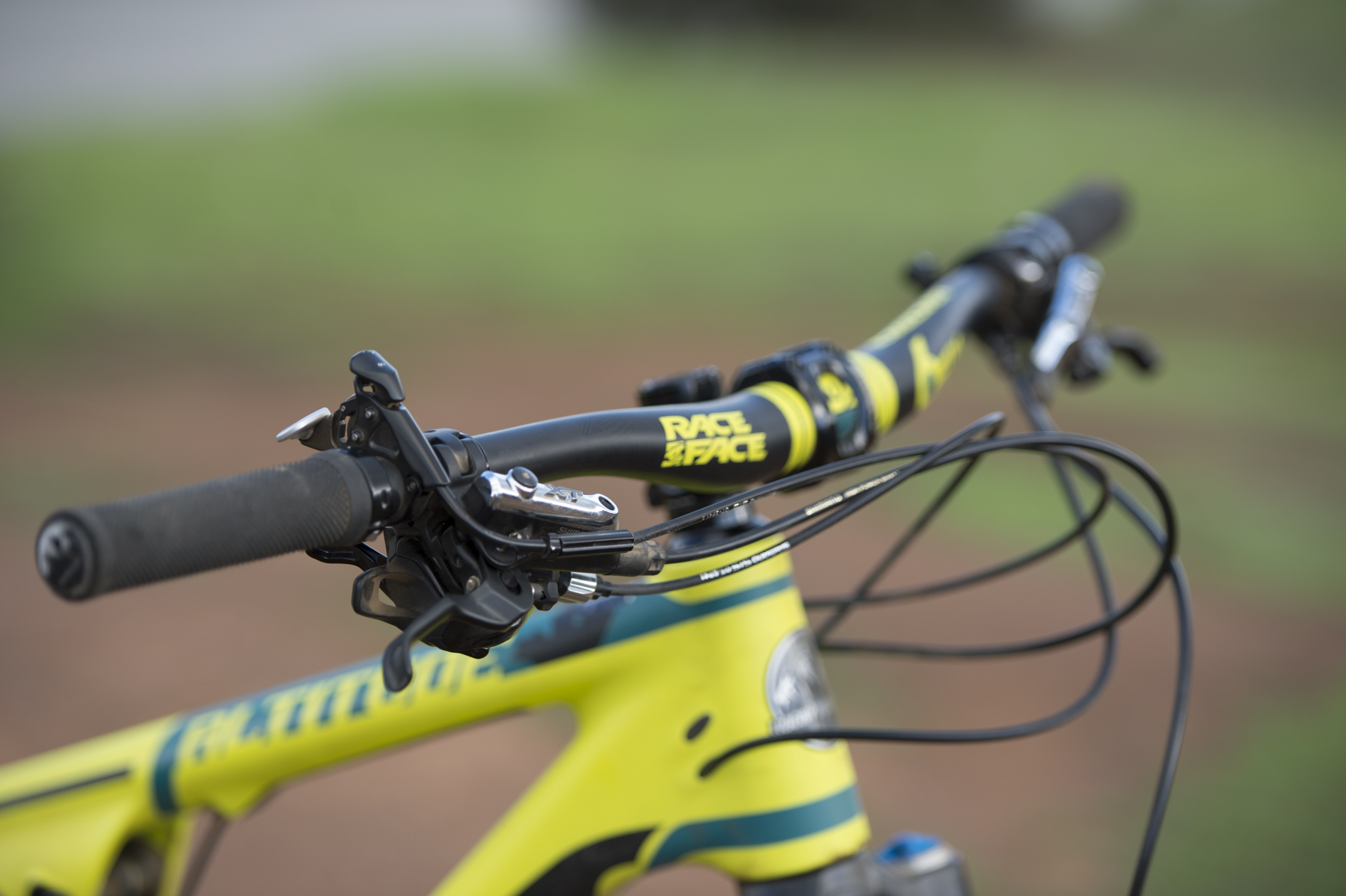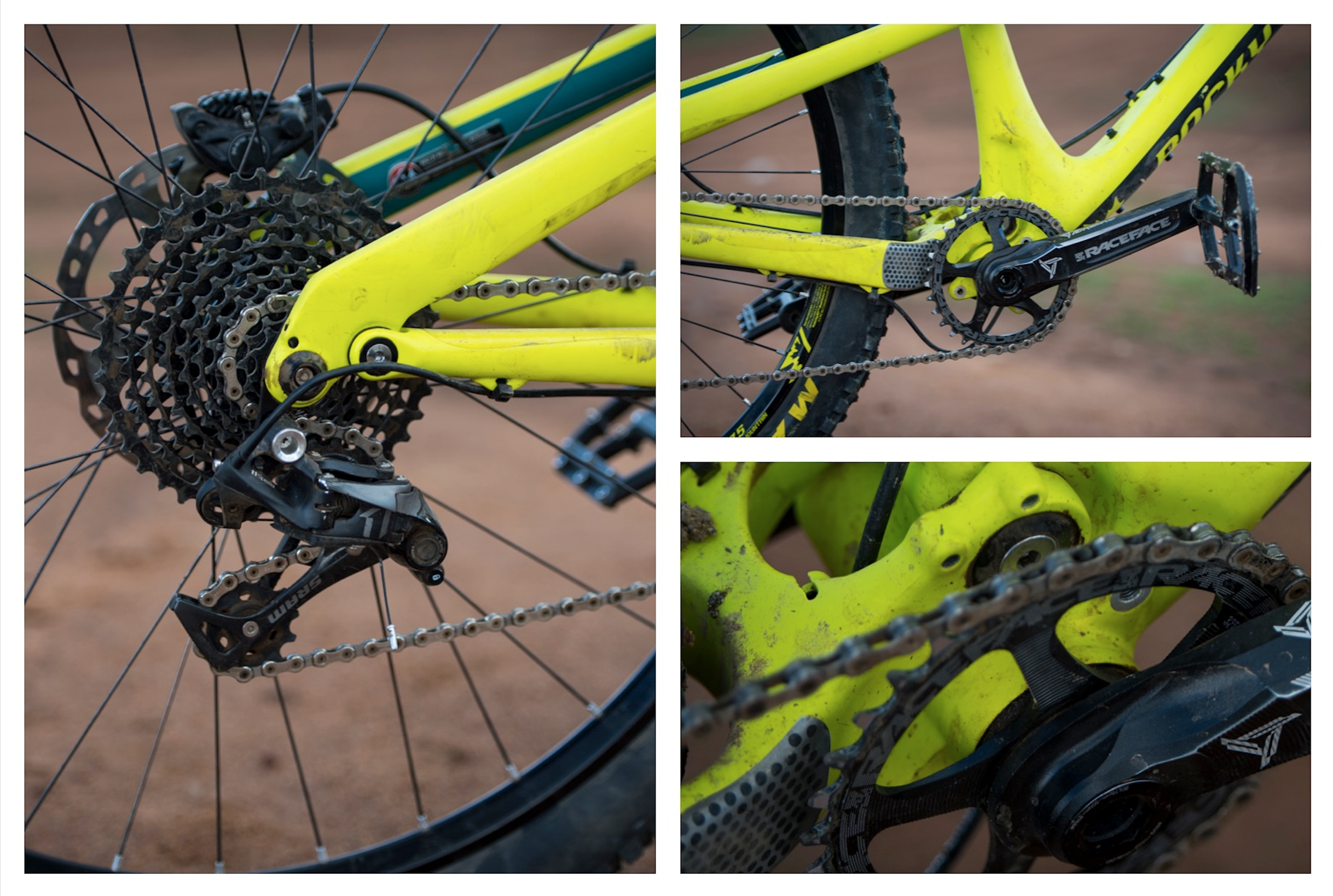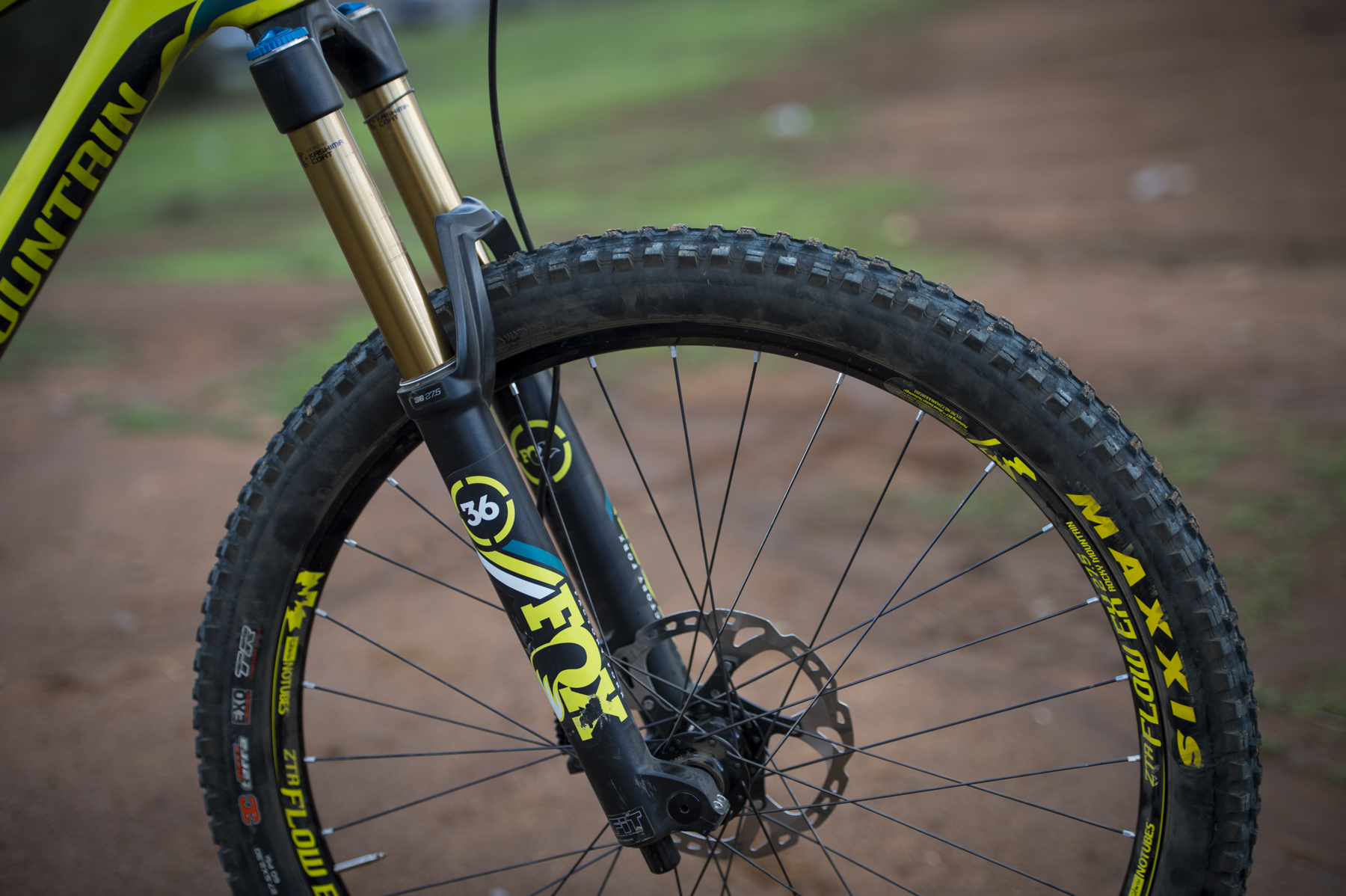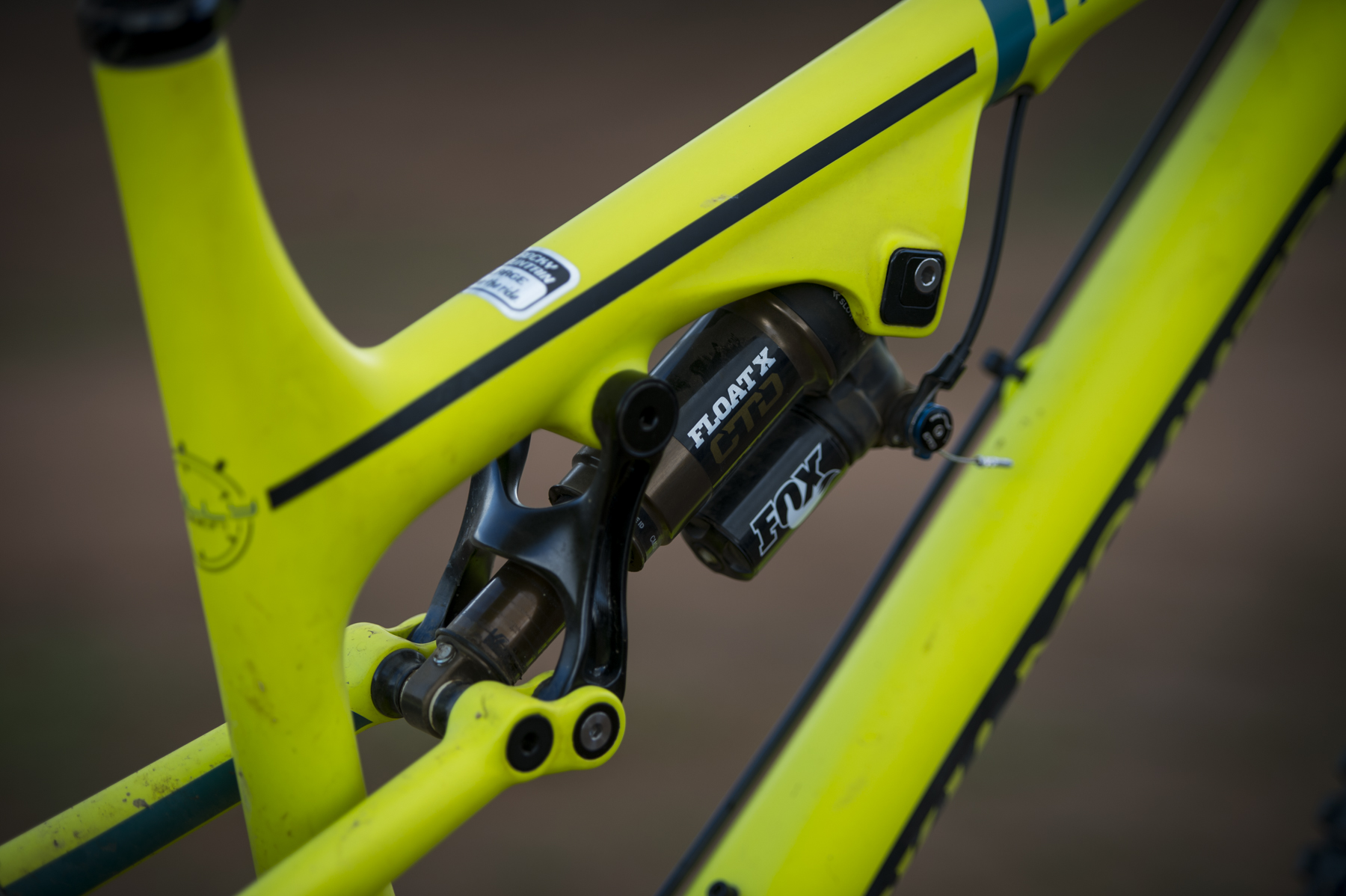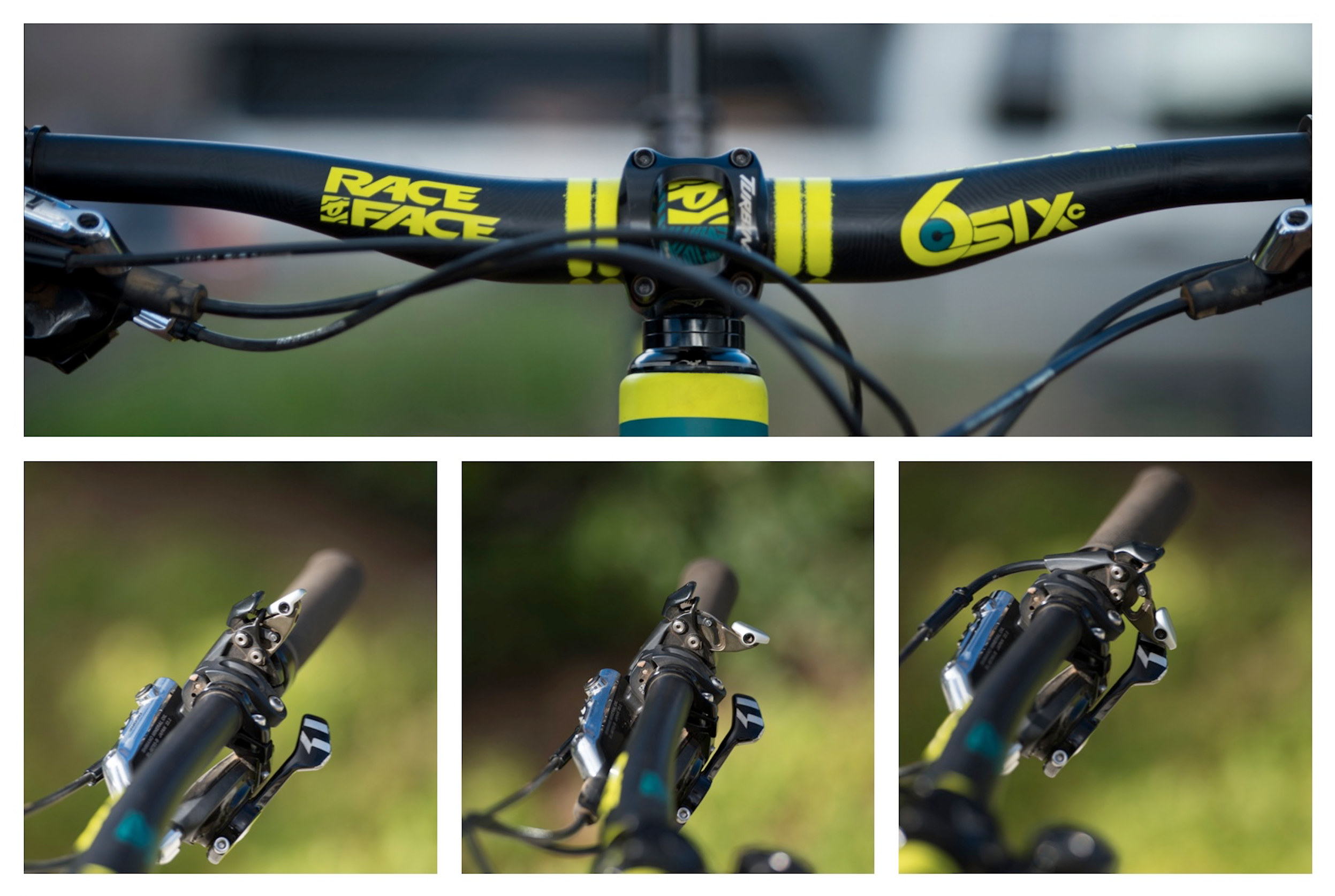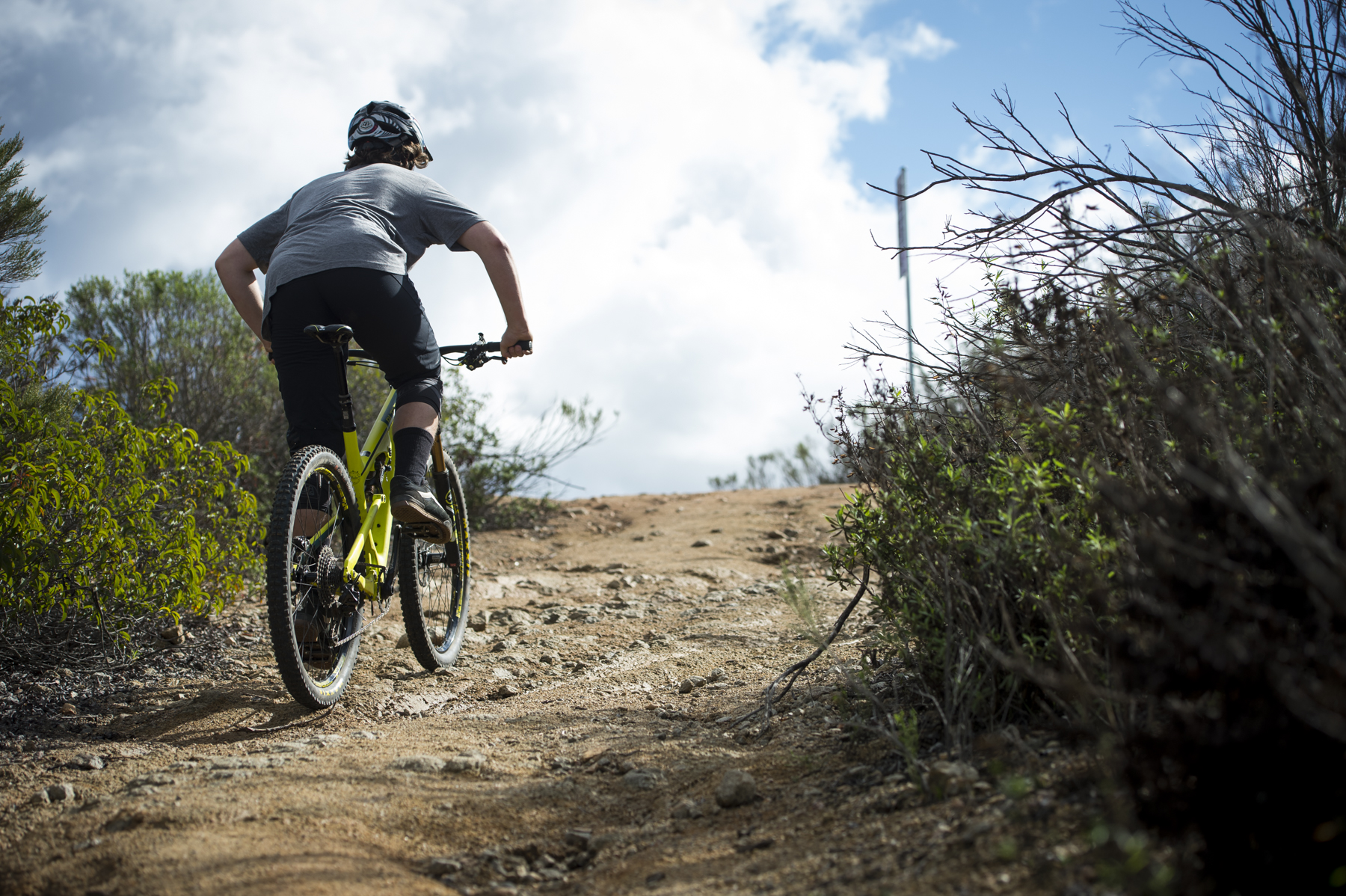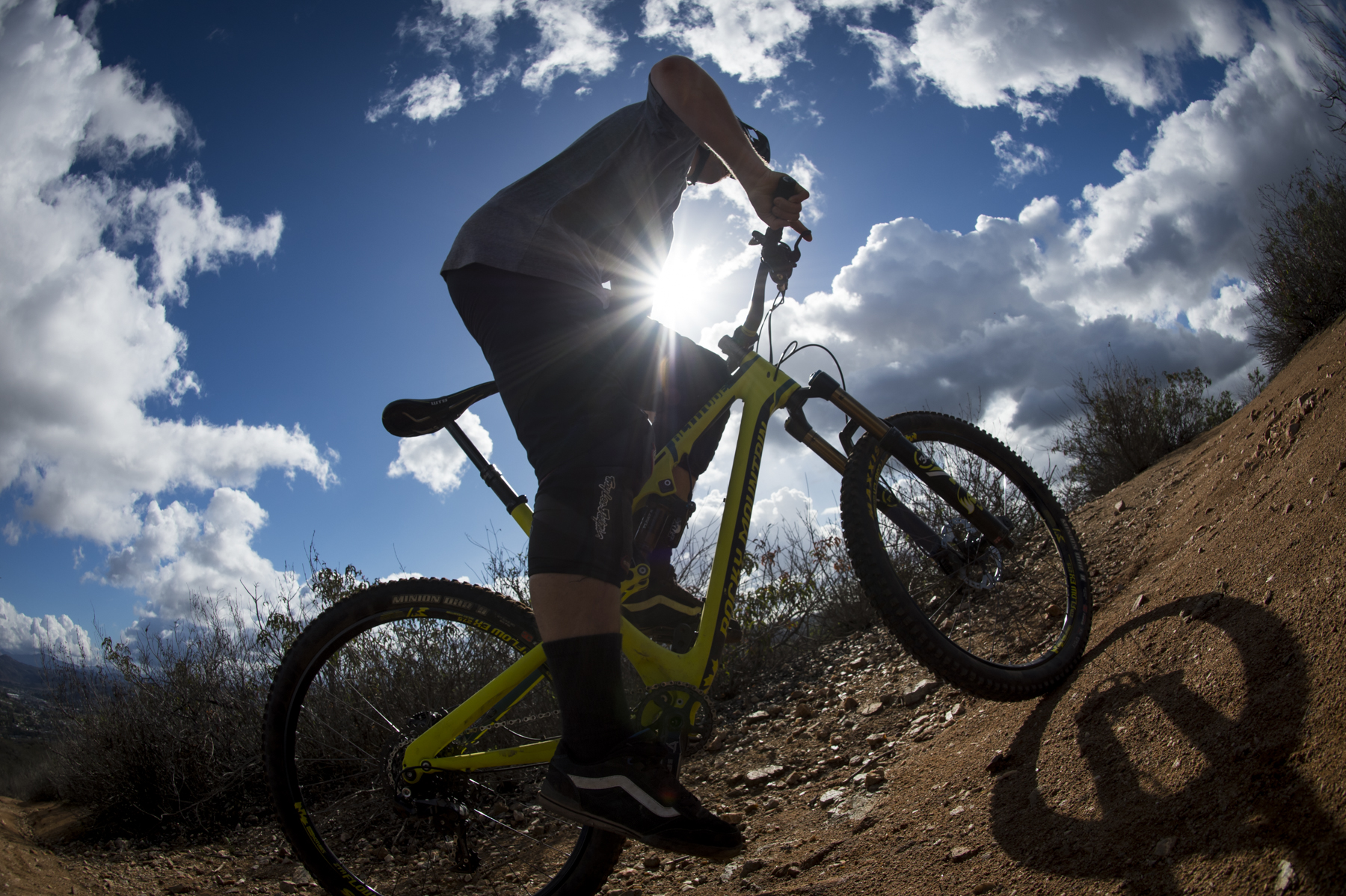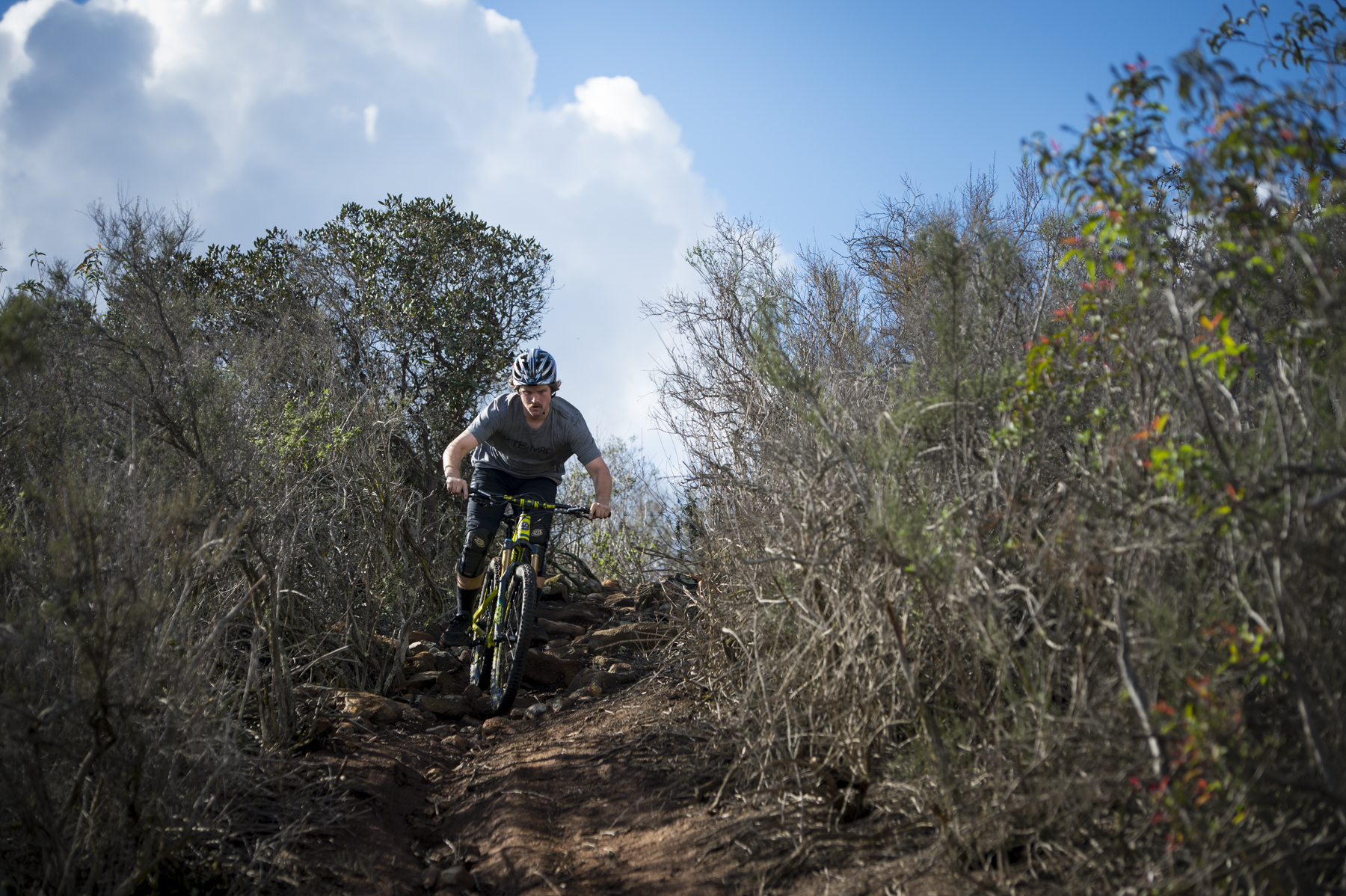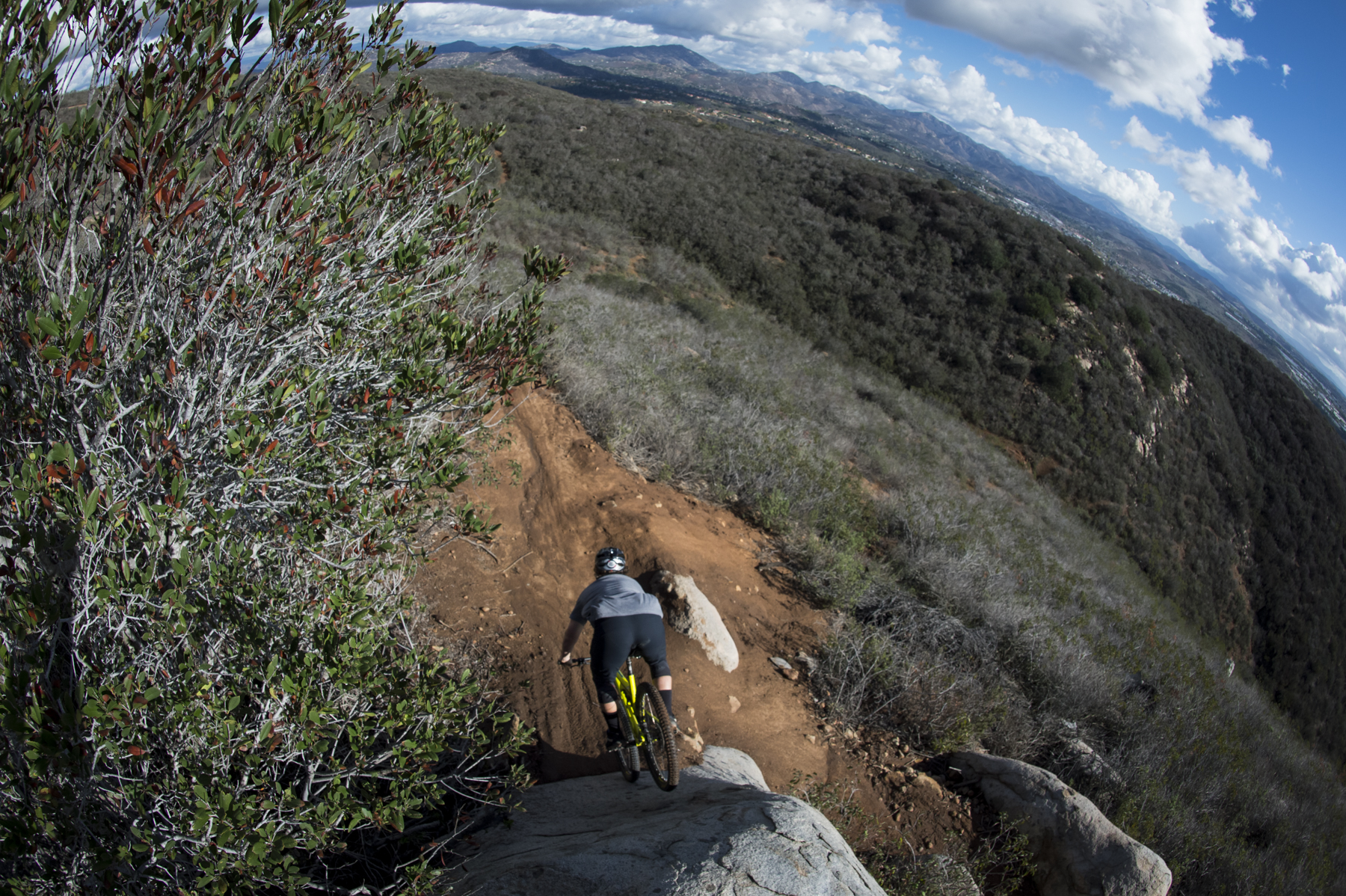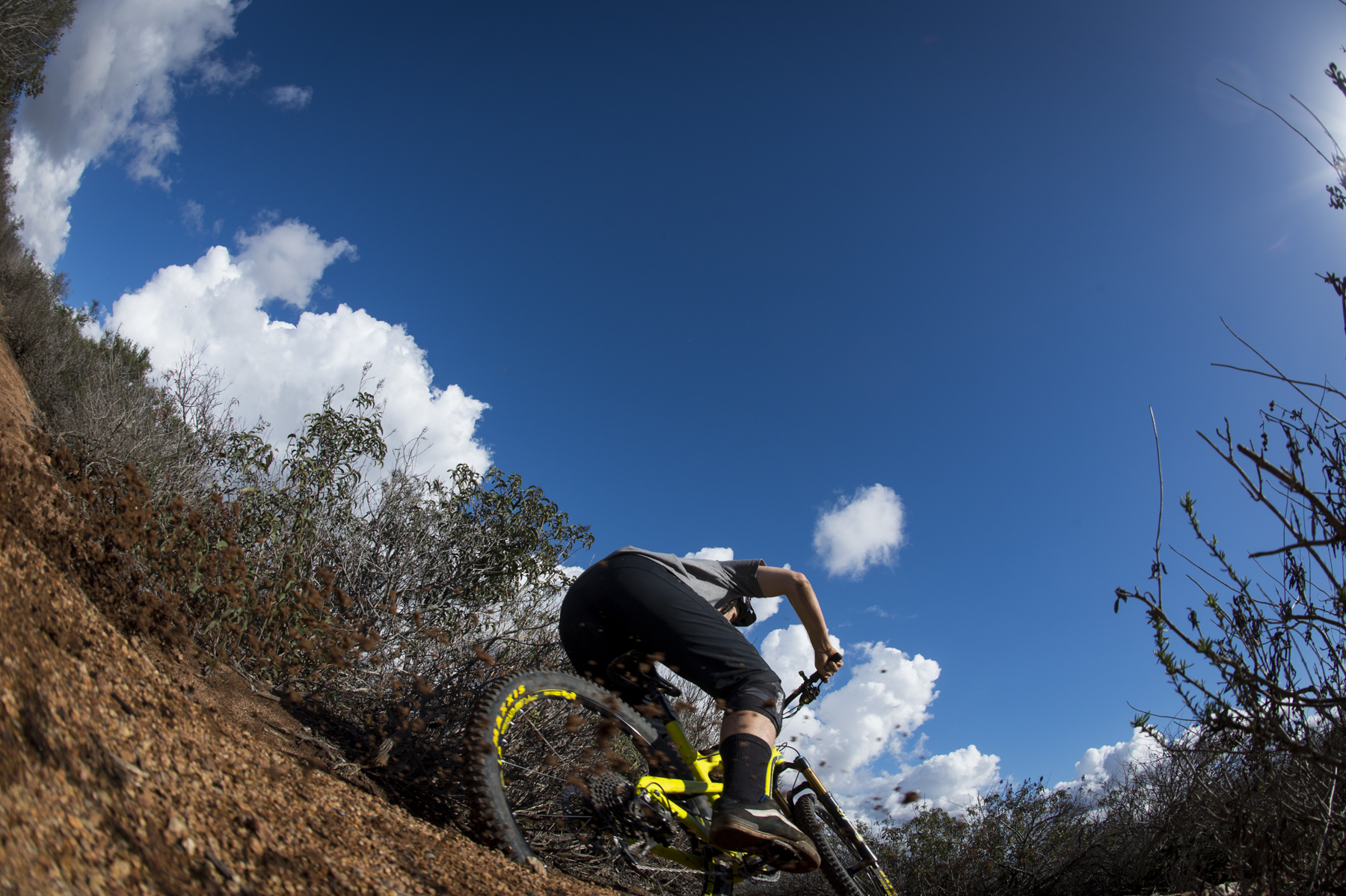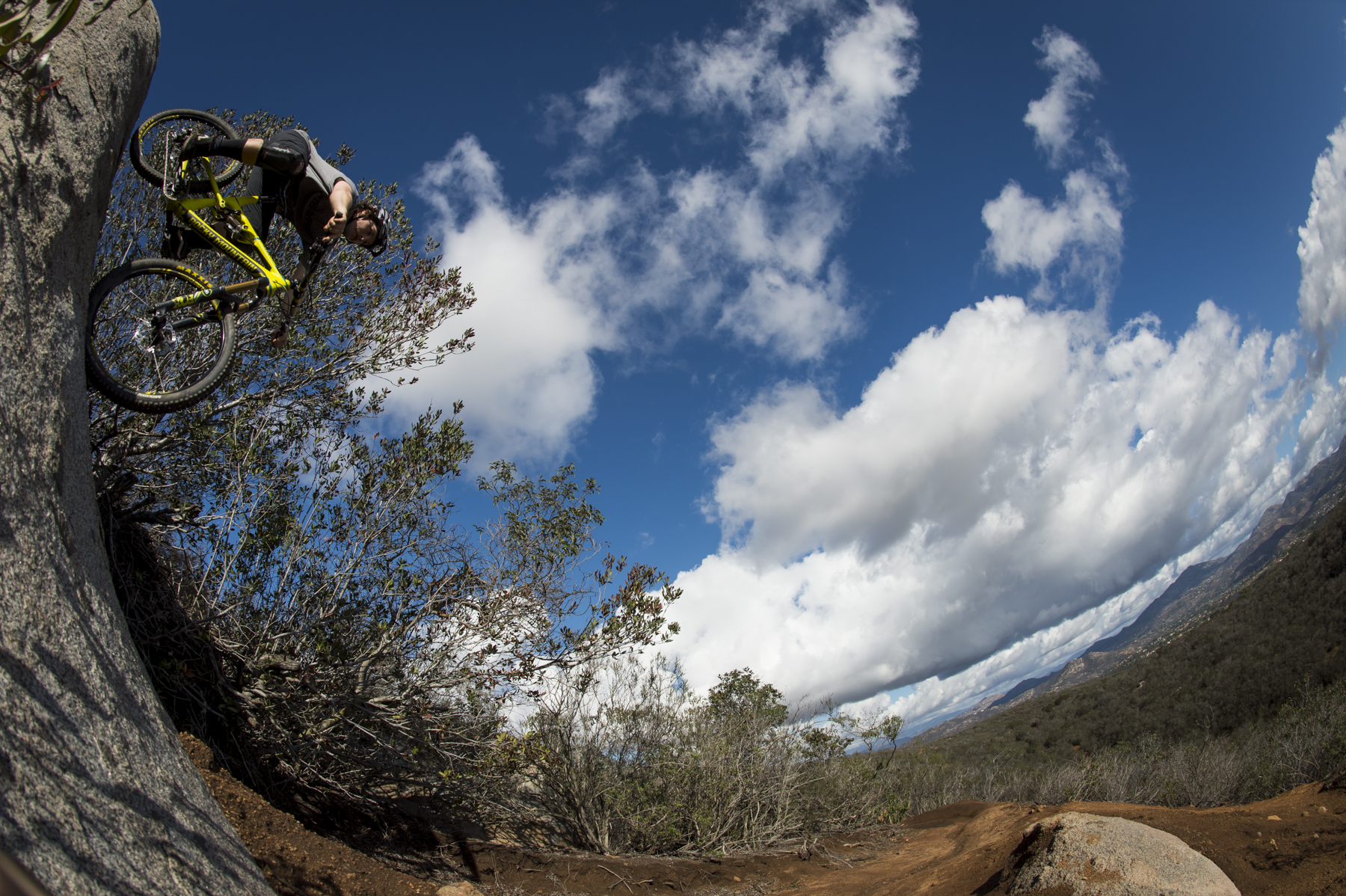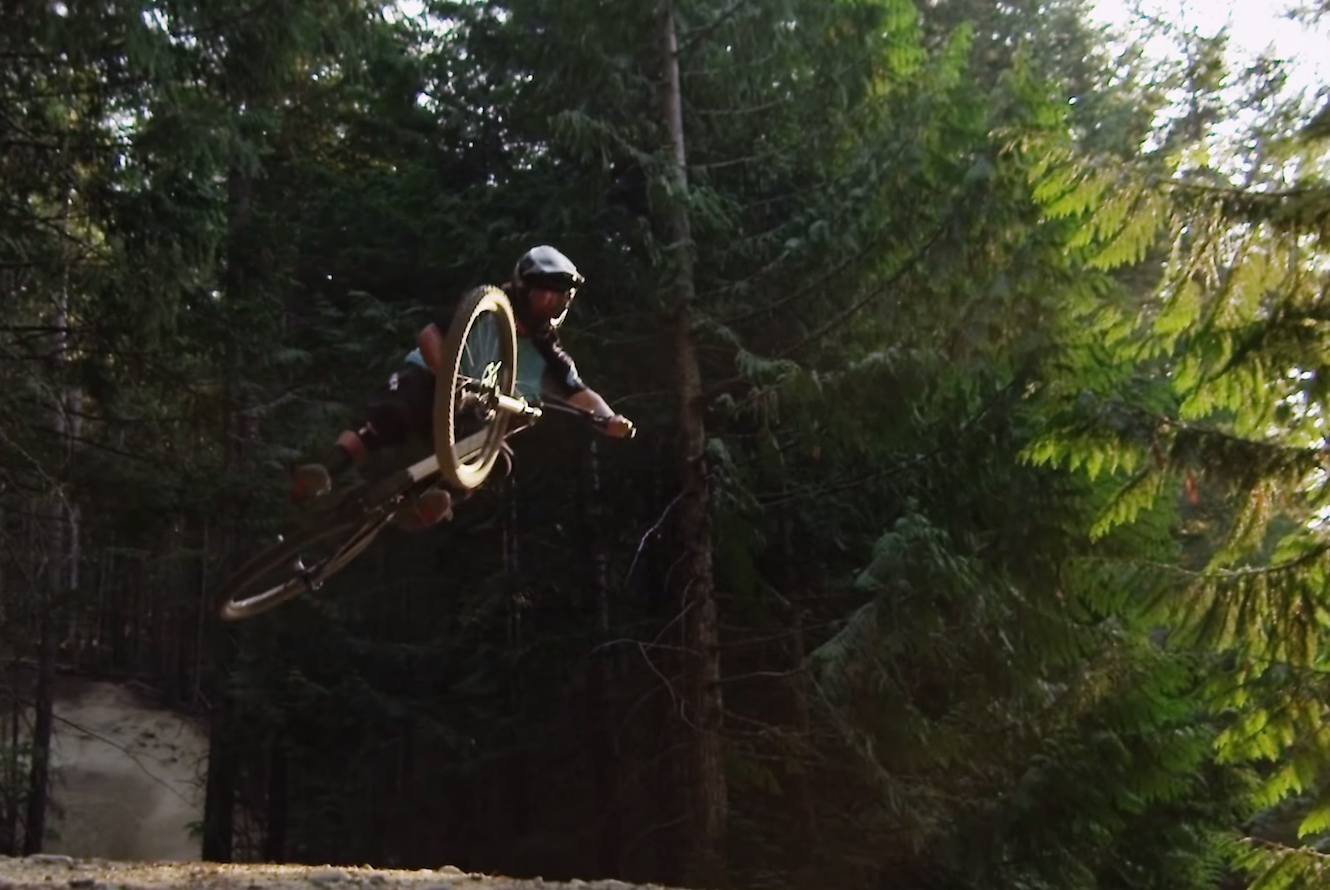With the new Altitude line, Rocky Mountain has come into the mid travel market with guns blazing. When we first inquired about setting up a test, they were eager to put us onto the “Rally Edition” of the Altitude. Boasting a carbon fiber frame, a burly front end mated to a 150mm rear end with bar mounted lockout and an impressive spec, it definitely caught our eye. The “Ride-9” adjustable rear end offers up multiple geometry options and shock rates all with a simple yet genius 2 in 1 flip chip that houses the upper shock eyelet. On paper, the 67 degree head angle seemed a bit steep compared to many of the household enduro options these days. Rather than getting hung up on our preconceived notions, we decided to first put the bike under a tester who was unaware of the stock geometry numbers right to see how he fared. Then we passed it along to a different rider who was fully aware of it’s ins and outs. Below you’ll see a culmination of their findings as we discuss how they got along on the bike.
Out of the Box
The Rally Edition tips the scales at 29.5 pounds. Up front, Rocky spec’d a 160mm Fox Float 36. After recently spending the last few months testing it, we knew already knew this was a wise choice on their part. Out back, the bike seemed a bit feathered out and lean in contrast. With 150mm of travel, and a rather narrow tube set, the Altitude’s rear end rolls on bushings rather than bearings. Nothing wrong with that though, there are plenty of proven bikes on the market which use bushings.
One nuance we found rather unconventional is that Rocky utilizes a bar mounted lock out for the rear end, but the front end doesn’t feature any sort of lock out or travel adjustment. Again, not a big deal, but it left us a bit confused as the lock out proved to be a bit obtrusive and wasn’t all that necessary.
The mix of X01 and XX1 is obviously great choice for drivetrain bits, while the Shimano XT brakes are also tried and true. Rocky kept it Canadian and threw in Race Face Turbine cranks and their 6ixC bar/stem as well for good measure. A Reverb dropper post and WTB Saddle round out the cockpit while Stan’s wheels rolling on Maxxis minions are a good, utilitarian choice. All in all, no corners cut and a great spec.
Geometry
On paper most of the geometry numbers check out as pretty strong for an enduro bike – especially given how much range the “Ride-9” system offers in terms of adjusting head angle, seatpost angle, and bottom bracket height. The one aspect that we struggle slightly with was the relatively steep head angle. We’re not talking half a degree steeper than most bikes in this category…we’re talking 1.5 – 2 degrees steeper. With the “Ride-9″ chip in a neutral position, the bike sat at about 67 degrees. That said, the bike was still surprisingly capable, and like most elements of design – it’s all about trade offs.
To the Altitude’s credit, the steeper head angle was incredibly snappy and agile in the lower speed, tight techy stuff. However, we were wishing for a bit more stability in the fast, rough sections. To each their own.
While we were able to get the head angle down to 66.2 degrees, we had to lower the BB all the way down to a -14mm drop. At that point, while it did corner incredibly well, we felt it was a bit too low for aggressive riding and our pedals came in contact with rocks, roots, trees, etc a bit too often. We inquired with Rocky as to why they were so conservative with the head angle and asked if it was possible for those wanting a slacker head angle to use an angleset. Unfortunately, due to the nature of the head tube/headset interface this isn’t possible.
On a more positive note, the Altitude felt really balanced in terms of climbing/descending. We were really really stoked on the short 428mm(16.85”) chainstays. While our size large test bike came in a touch on the smaller side, it felt nimble and playful and we never felt cramped. However, it is worth pointing out that this is not of the same vein as the latest crop of long, low, and slack enduro bikes such as a Nomad or a Reign.
Components
Rocky Mountain did a great job selecting solid, reliable parts that bring the bike in at a reasonable price. While we aren’t completely raving about it’s incredible value, they definitely didn’t cut corners and there isn’t much that would need upgrading in the future. As mentioned before, the brakes and drivetrain are well beyond proven, and we’re huge fans of the fork. We’d have to dig deep to find anything to complain about.
It would be nice to see a chainguide of sorts on the bike, but that’s an, easy upgrade and throughout our time testing the bike we never lost a chain once so we can’t complain. We have become fans of MRP’s AMG simply because in addition to some added security, it guards your chain and ring at a small 130 gram penalty…It would be a good add on to protect your investment.
We really liked the Race Face bar and stem. The 35mm setups seem to stiffen up an enduro bike’s front end nicely and we felt the upsweep/backsweep combo of the bar was super comfortable. The grips and saddle were nothing special, but those are bits that most people swap out anyway. While the wheels were a bit uninspiring, they did a great job and stayed true and rolling smooth after more than a few mishaps and poorly calculated landings. We can’t expect to see $3,000 carbon wheels spec’d on a $6800 bike. Our bike came setup with tubes, and tubeless ready wheels/tires, so were we to keep it, we’d pull the tubes out and save a touch over a pound or rolling weight that would liven up the bike a bit as well.
Suspension
Where do we begin? The Fox Float 36 is an incredibly capable, confidence inspiring fork. If you are an aggressive rider and perhaps plan to do some racing, it’s perfect. It has all the right tuning options and adjustments. If you want something more pedestrian that does the thinking for you, and locks out on the climbs then you’re barking up the wrong tree. For all out performance however, it is the hot ticket.
Out back, the Fox Float-X didn’t exactly win us over. While it wasn’t bad, we have become jaded by some major improvements as of late in the air shock segment from Fox’s main competitor. It seemed a bit harsh off the top used most of the travel with relative ease in most positions on the “Ride-9”. Additionally, given the frame’s construction it was nearly impossibly to access the one and only important adjustment that was actually located on the shock : the rebound knob. While we like the idea of a lockout on a rear shock, we really did not get along with the bar mounted lever which was used to switch the shock from climb to trail to descend modes. It wasn’t strictly because we like the simplicity and less cluttered look of a bike with less cables….While we commend Rocky Mountain for putting the Reverb lever under the left side brake lever, that put the lock out lever hovering above the shifter lever and totally in the way. Before we sound too eggy about such a small quip, keep in mind that it’s really fix simple to just pull the bar mounted lever and cable off and simply pop the shock mounted switch on. If this were our bike, that’s what we would opt to do right out of the box. In the grand scheme of thing this is not a big deal though.
OK, enough about the techy details, let’s get down to brass tacks and into the meat and potatoes of the review. Below we’ll delve into how the bike actually rode and how the sum of the parts worked on the trails.
Climbing
In terms of rider position, we found the compact front end teamed with a relatively steep seat angle to be a good combination on most climbs. Our taller, lankier test rider was wishing for a slightly longer top tube on the more technical climbs to help keep the front end down. While it isn’t always ideal, one could always opt for a stem that’s 5 or 10mm longer though. On the tight, twisty and steep climbs we were all glowing and continually floored by how easy it was to flick the bike around. This is largely due to the short 428mm chainstays. Huge props to Rocky Mountain – we feel many manufacturers err too far on the long side and would like to see more enduro bikes with chainstay numbers in the 423mm – 432mm range.
When it came to climbing efficiency in terms of suspension, it was a mixed bag. The Altitude climbed fairly well – we certainly can’t knock it. However, coming full circle back to the shock, we can’t quite put a finger on it but the Float X just never seemed settled. In fairness, Fox does offer volume reducers which could be used to tune the progression a bit but we didn’t crack it open and start tinkering. As mentioned before, we would opt for the removal of the bar mounted lock out and just utilize a standard CTD switch on the shock to clean things up. It would be located in a really convenient spot as well. That said, it’s worth pointing out that most pros racing enduro would still favor the lockout as it can help shave some seconds when pushing on the uphill sections of some stages. The Altitude was a solid climber – we feel that the frame was excellent, but it could shine a bit more with a different shock mounted up to it.
Descending
We found the Altitude to be a bit more of a finesse rider’s bike when it was pointed down. That’s not to say it needed to be babied, but the numbers on paper translated onto the trail with utmost transparency. Let’s be honest – a capable rider can absolutely charge a 150mm bike 27.5″ with a burly fork up front even if it has a 67 degree head angle. However, as stated prior – it doesn’t fall into the long low and slack category. On the descents, perhaps the best part of this bike was just how snappy it was in the corners. The short not only made it super easy to manual over objects, but late braking in turns and ripping the tight stuff was way too much fun.
The frame itself proved to be super stiff in the corners despite it’s lean appearance. The layup used in the Smoothwall Carbon never felt harsh, yet did a great job of taking the edge off and giving the bike that svelte feel that we’re all expecting after we empty our wallet and hop on a carbon bike.
Suspension wise, the Fox 36 did an incredible job of giving us that extra bit of confidence to get up over the front end when things got rowdy as the bike was pointed downhill. Out back, while the Float-X was slightly harsh off the top, it gobbled up mid sized hit and chunder quite nicely. While the bike seemed to use most of the travel a bit easily, it never once bottomed harshly during the course of our testing – not bad, as we definitely sent it off of some pretty big drops and roll ins without hesitation.
Overall
Seasoned riders who find themselves on mixed terrain will love how flickable the Altitude Rally Edition is. Riders looking for a bike that they might be riding in a bike park for a large portion of the year, or rallying shuttles on some mega steep terrain may want to consider looking elsewhere. Ideally we see this bike suited to someone who rides a really good variety of trails, but quite often finds themselves on tighter, techier stuff with a good mix of ups and downs. For the consumer who just owns one trail bike to do it all, this is a fantastic choice. While we were wishing for a slacker head angle, the adjustability in both the front and rear ends still give you a host of options for dabbling and fine tuning your ride for most of the situations the average rider will encounter. In terms of value, the bike isn’t cheap by any means, but you start with a really solid base, and there isn’t really anything that would need to be changed out or cost you an arm and a leg. Overall this bike left us smiling and proved to be a sturdy, well rounded contender.
Weight : 29.5 Lbs w/o pedals.
Price : $6,799.99 US

